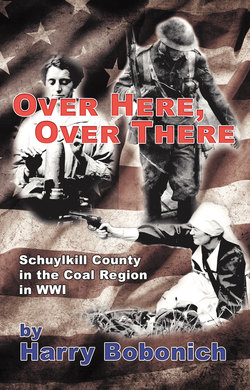Читать книгу Over Here and Over There - Harry Bobonich - Страница 13
На сайте Литреса книга снята с продажи.
The “Miracle” of the Marne
ОглавлениеChief of the German General Staff Alfred Graf von Schlieffen developed a plan to successfully fight the war with both France and Russia. The initial strategy was to first defeat France and then deal with Russia on the Eastern Front. When the war with France bogged down, the plan was reversed. Schlieffen’s strategy now was to hold the line on the Western front and attack Russia in the East.
The first Battle of Marne took place on the Western Front from September 5-12, 1914. It pitted Germany against France and the British Empire. By this time the German armies had moved swiftly through Belgium and France, hoping to knock France out of the war before facing Russia, but they were stopped at the Marne River—only thirty miles from Paris. The outcome was an Anglo-French victory, but it should be pointed out that the Germans made several tactical errors. The victory came at a high cost; France alone suffered 250,000 casualties. It was a decisive battle and some refer to it as the “Miracle of the Marne.” It did not determine who would win the win, but it set the course that the war would go on.
For some time a legend has persisted that a fleet of taxis transported reinforcements to the front lines that turned the tide of battle against the Germans. According to John Hanc and other writers, taxis did convey approximately 5,000 soldiers to the front lines, but that small number did not matter much since millions of troops were involved. Furthermore, most of those that were transported by the taxis were retained in the rear as back-up troops.
Nevertheless, Hanc pointed out that the “Taxis of the Marne epic came to symbolize France unity and solidarity. And a century later, there are few symbols more enduring or important in France than the Taxis of the Marne.”
German General Alexander von Kluck, however, had made a tactical blunder. He exposed his flank, which provided an opening for the Allies to attack and eventually drive the Germans back across the Marne River.
Little did anyone know (especially those thousands of soldiers who hurriedly signed up) that it would be trench warfare for the next four years where both sides simply dug in; the region in between was called “No Man’s Land”–sometimes referred to as the place where death does not take a holiday. Life in those entrenchments was horribly bad: disease, injuries and death were common. Continuous shellfire by the Germans not only resulted in injuries and death, but many soldiers were actually buried from constant shell-bursts. It is hard to believe, but approximately one-third of Allied casualties on the Western Front occurred in the rubble, slime and mud of those rat-infested death traps. (Hanc 2014)
The long war involved many, battles in various theaters of operation. Just several battles in the beginning of the war show how horrendous the toll of deaths was on both sides. Even those battles that are not so well known resulted in thousands of casualties. We will cover other battles briefly from time to time, and will also discuss a number of crucial battles in some detail.
